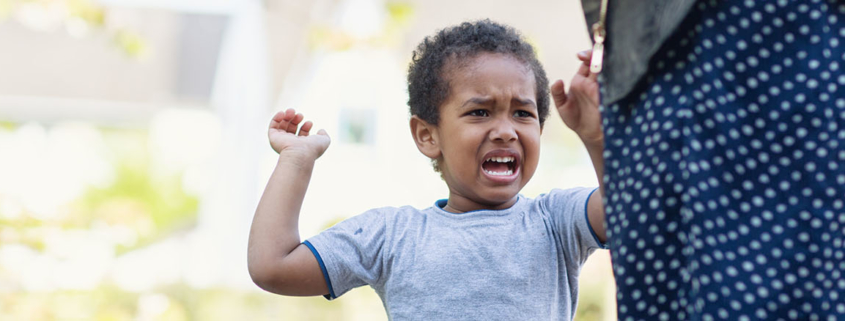ISSUE
People with intellectual and/or developmental disabilities need supportive and caring relationships in order to develop full and active lives. Historically, people with intellectual and/or developmental disabilities across the age span have frequently been subjected to aversive procedures (i.e., electric shock, cold water sprays and deprivations like withholding food or visitation with friends and family) that may cause physical pain, discomfort and/or psychological harm. Children and adults with intellectual and/or developmental disabilities are frequently subjected to physical restraint, including the use of life-threatening prone restraint and seclusion for long periods of time.
Research indicates that aversive procedures such as deprivation, physical restraint and seclusion do not reduce challenging behaviors, and in fact can inhibit the development of appropriate skills and behaviors. These practices are dangerous, dehumanizing, result in a loss of dignity, and are unacceptable in a civilized society.
POSITION
Research-based positive behavioral supports should be readily available in natural settings including the family home. Families, caregivers, educators, direct support personnel, and other professionals and paraprofessionals should be provided with training and support in implementing effective positive behavioral interventions and supports in all environments.
Behavioral supports should be individually designed and positive, emphasize learning, offer choice and social integration, be culturally appropriate, and include modifying environments as needed.
The Arc and AAIDD are opposed to all aversive procedures, such as electric shock, deprivation, seclusion and isolation. Interventions must not withhold essential food and drink, cause physical and/or psychological pain or result in humiliation or discomfort. Physical restraints should only be used as a last resort to eliminate the danger of physical injury to self or others.
The following factors should be considered in developing a positive behavioral intervention plan:
- The circumstances and environment in which the behavior occurred;
- The perspectives of the individual, his or her family and their social/cultural background and values;
- The contributing factors, such as physical or medical conditions, social and environmental influences;
- The completeness and accuracy of any data which has been collected about the behavior;
- The nature, extent, and frequency of the perceived challenging behavior; and
- The function of the behavior, especially what the person may be trying to communicate.
Further, any positive behavioral inventions must also include consideration of:
- The potential secondary effects and risks associated with the intervention;
- The legal, social and ethical implications;
- The ease and practicality of implementation; and
- The consistency with values of the individual’s culture.
Positive behavioral supports should be:
- Designed in a person-centered process involving the individual;
- Developed within the broader context of providing quality medical, psychological, educational, and facilitative services;
- Based on a functional analysis of the behavior and the circumstances under which it occurred, a thorough assessment of each individual’s unique abilities and contributions, and an understanding of how previous interventions worked;
- Provided through a least restrictive strategy and described in a written plan;
- Grounded in evidence-based procedures that will:
- prevent challenging behaviors;
- teach new skills that may replace challenging behaviors;
- prevent the on-going reward of a challenging behavior;
- reinforce positive behavior;
- ensure safety (when necessary); and
- provide systemic information on the effectiveness of the support.
- Used in a humane and caring manner respecting individual dignity;
- Implemented in positive, socially supportive and culturally appropriate environments, including the home;
- Carried out by individuals (i.e., staff, family members and others) who have been trained and are qualified to effectively apply positive, non-aversive approaches;
- Include adaptations to the environment and reinforcers that people with intellectual and/or developmental disabilities and their families identify as positive; and
- Monitored continuously and systematically to ensure appropriate implementation and that the support is consistent with individual needs, positive in its methods, successful in achieving established goals, and changed in a timely fashion if success is not evident or occurring at an appropriate rate.
Rev’d 2021
Joint statement with the American Association on Intellectual and Developmental Disabilities (AAIDD).
1Intellectual Disability (ID) is a lifelong condition where significant limitations in both intellectual functioning and adaptive behavior emerge during the developmental period (before adulthood).
Developmental Disabilities (DD), first defined in 1975 federal legislation now known as “The DD Act”, are a group of lifelong conditions that emerge during the developmental period and result in some level of functional limitation in learning, language, communication, cognition, behavior, socialization, or mobility. The most common DD conditions are intellectual disability, Down syndrome, autism, cerebral palsy, spina bifida, fetal alcohol syndrome, and fragile X syndrome.
The acronym “IDD” is used to describe a group that includes either people with both ID and another DD or a group that includes people with ID or another DD. The supports that people with IDD need to meet their goals vary in intensity from intermittent to pervasive.








